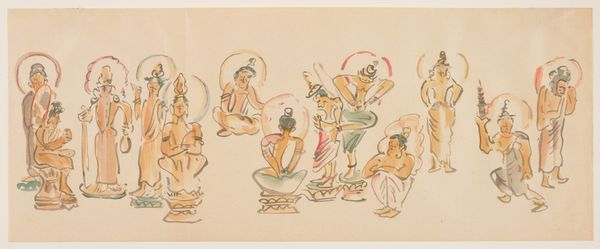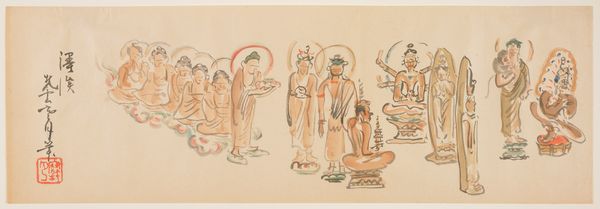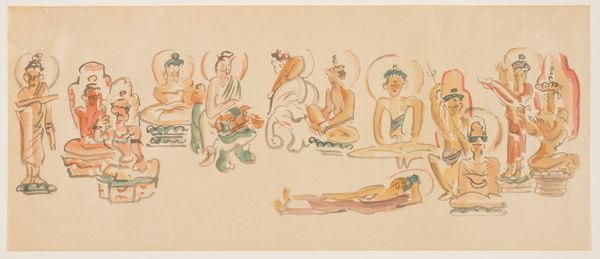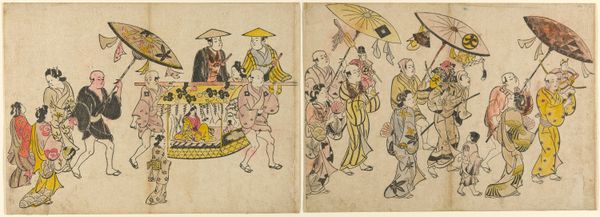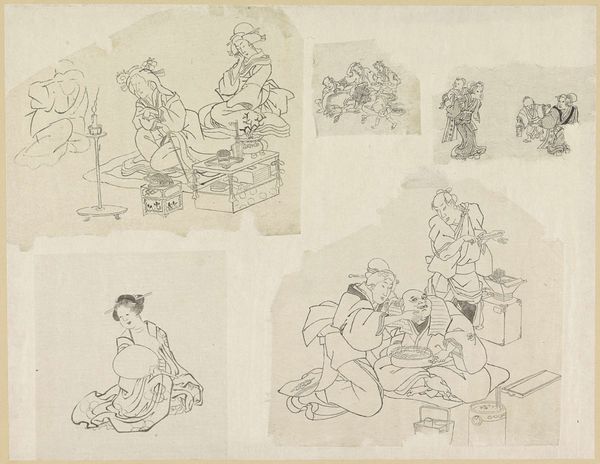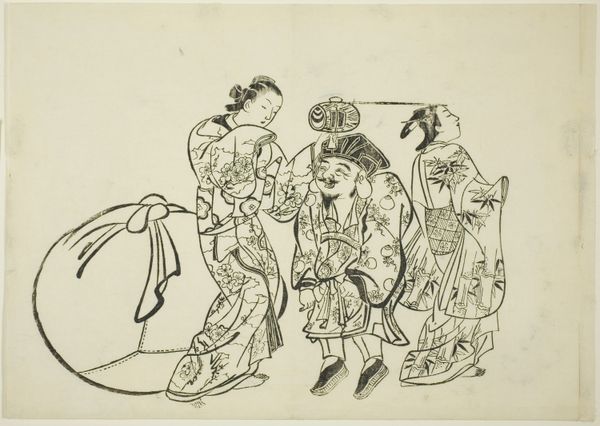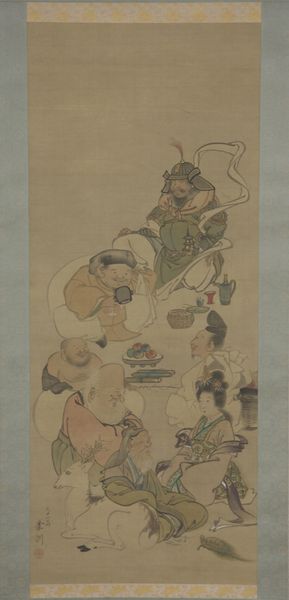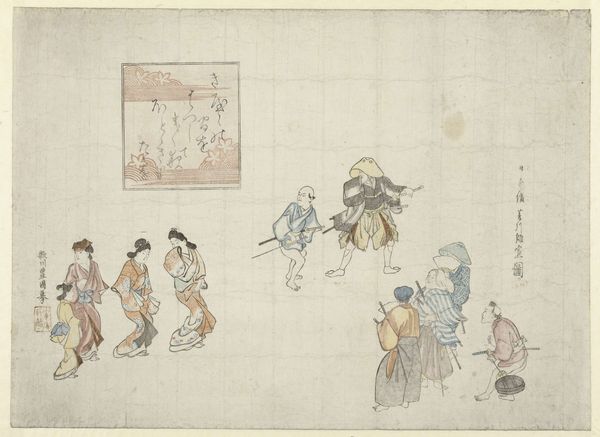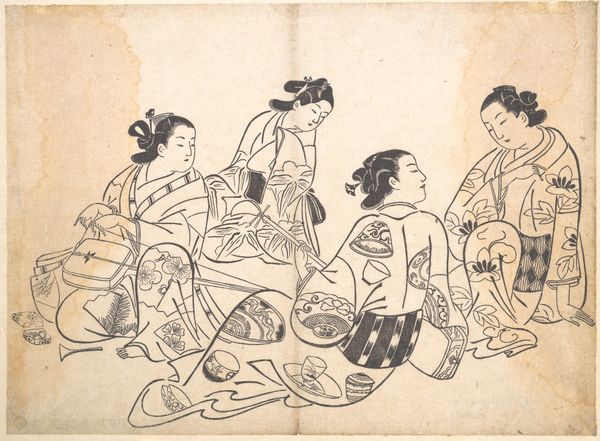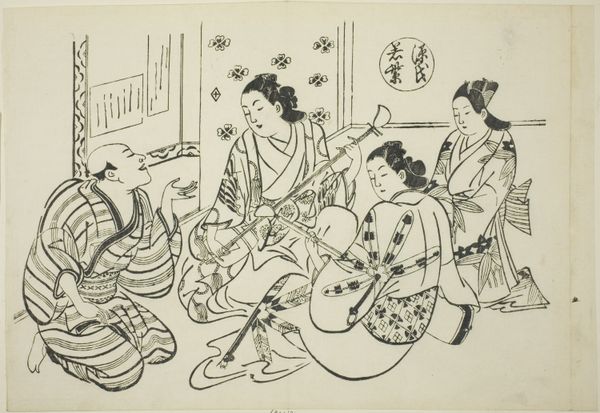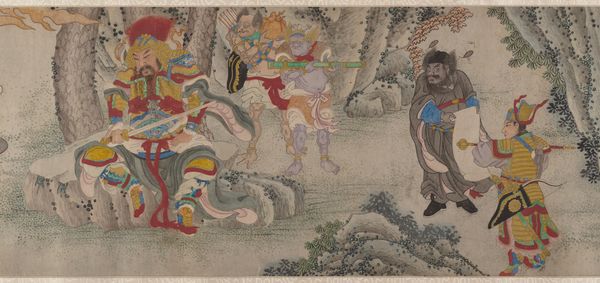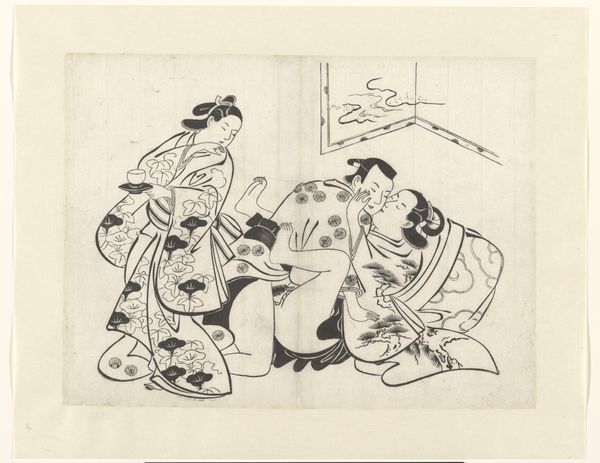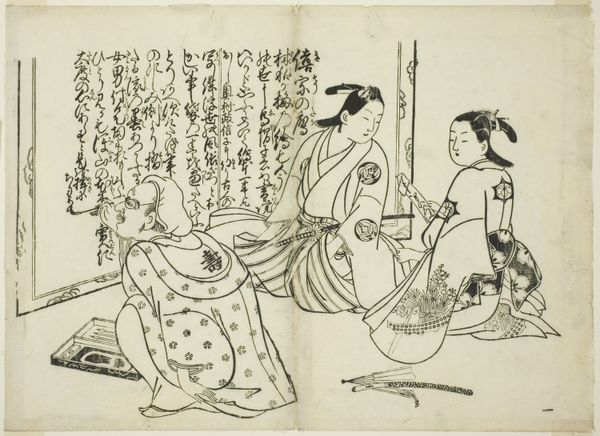
Dimensions: 8 1/2 x 13 1/2 in. (21.6 x 34.3 cm) (image, sheet)
Copyright: Public Domain
Curator: Here we have "(Asakusa Kannon temple caricatures A)" by Awashima Kangetsu, circa 1900. The piece resides here at the Minneapolis Institute of Art. Editor: The immediate impression is one of lightness and quickness. The watercolor washes are so delicate and the line work seems spontaneous. There's an appealing economy to the composition. Curator: Absolutely. It's fascinating how Kangetsu captured these religious figures. Asakusa Kannon Temple was and remains an incredibly popular destination. Consider that the figures are presented as caricatures. How does that potentially democratize access or commentary surrounding traditionally austere or rigid images of worship? Editor: I'm interested in how the artist isolates the essence of each form. Observe, for instance, how certain facial features are simply suggested by a delicate curve, and how effectively those curves imply a whole character. The use of negative space becomes just as important as the drawn line itself. Curator: It speaks to the dynamic societal shifts in Meiji-era Japan. The piece likely served as social commentary, reflecting perhaps the increasing accessibility and familiarity with religious spaces amidst urbanization and modernization. Kangetsu isn’t merely representing deities, they are capturing a changing relationship between the public and established religion. Editor: It’s worth noticing, too, the repetitive rhythm created by the haloes. Those lightly colored circles act as visual anchors, tying all the figures together in a unified plane despite the variety in pose and expression. Curator: Exactly. By imbuing them with a sense of relatable humanity, we're drawn to consider who holds the power to define sacredness, and how those definitions shift. Editor: Well, seeing how efficiently the artist has deployed line, shape and colour here has reminded me how to judge what is fundamental to the success of an artwork. Curator: Thinking about how art interacts with evolving cultural norms will continue to shape how I study artworks going forward.
Comments
No comments
Be the first to comment and join the conversation on the ultimate creative platform.
